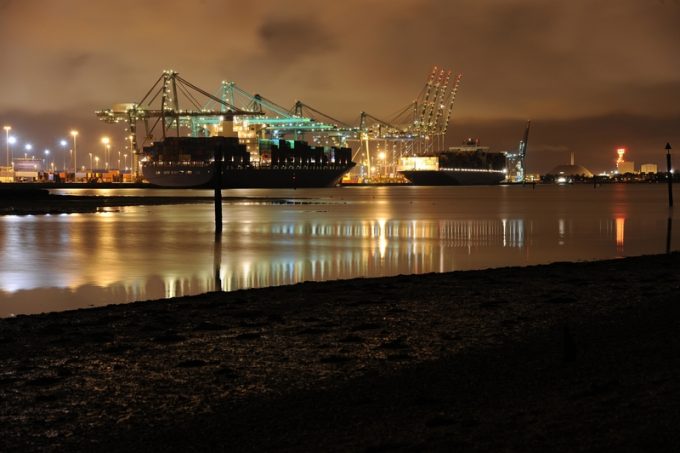DP World offers UK shippers £100 per box as modal shift incentive
DP World has raised the incentive for UK importers using its Southampton terminal to switch ...

Hauliers and logistics operators are warning UK shippers and consignees using the country’s second busiest container gateway, Southampton, of higher landside rates, as costs rise as a result of growing box congestion.
One haulier told The Loadstar: “The problems began with the move of The Alliance services from Felixstowe to Southampton last April, which meant a lot of hauliers moving with their customers.
“With the increased volumes there is greater demand for haulage transport yards in and around Southampton and, since then, every haulier has been jostling to get facilities in the right place. The trouble is that these simply don’t exist, there is simply nothing available.
“You have to go a lot further than the 10-mile radius of a port that makes economic sense for a haulier and, as a result, round-trips between port and transport yard have greatly increased,”
This has been compounded by two further issues: the introduction of larger vessels, resulting in more container exchanges per vessel call; and the ongoing squeeze on driver availability.
Some have estimated that, at any one time, there are around 15,000 containers in Southampton’s container yard, compared with around 6,500 before The Alliance services began calling there.
And the issue is not so much the new services, but the size of vessels deployed in the strings, which has led to more extreme peaks and troughs of container volumes– a problem not unique to Southampton.
“The higher yard occupancy of containers means there have also been issues with dropping off export containers and collecting empty boxes,” the source continued.
Adding to haulage companies’ costs is the recent spike in demand for qualified drivers, which “has put the business into the hands of the staff agencies”, with driver wages in the Southampton area up by as much as 50% in recent months.
It has also led to a battle to obtain drivers, with agencies said to be targeting their recruitment efforts on luring drivers from haulage firms with the promise of higher wages.
“Every haulier I have spoken to is now looking at ways of recouping these extra costs – we have to, because if we don’t the only thing I can see happening is a series of bankruptcies among forwarders and transport operators,” the source said, adding that he was looking to raise his haulage prices for trucks servicing Southampton by 10%-12.5%.
“There are a number of ways of doing it – some have announced a Southampton infrastructure surcharge, others have upped booking cancellation fees.
“Cancellations have become a massive issue for us. The problem is that if you get a job cancelled anything up to a couple of days beforehand, you have absolutely no chance of being able to replace it, which means truck, trailer and driver all sitting doing nothing,” the source continued.
The Loadstar understands that similar difficulties have been experienced at Felixstowe and London Gateway, due to larger vessel sizes and vessels failing to keep to published sailing schedules.
Comment on this article
Andy Lane
January 09, 2018 at 4:20 pmInteresting. Based on some data which I have…
–
In terms of day of ship arrival and overall volume contribution. Then for Southampton we see 21% of the total weekly demand on a Sunday, and 20% on a Tuesday. Gateway is 19% Friday and 16% Saturday, with Felixstowe’s peaks being 16% Saturday and 17% Sunday. With 14.5% per day being the perfect spread.
–
This would lead to an “import delivery rush” Monday-Wednesday, but an export “rush” Thursday-Friday. That is a triangulation killer for sure, and results in many “wasted” empty container or empty chassis miles.
–
The ship operators claim that the scheduled day of arrival is based on shipper preferences, however shippers claim that they move cargo to match ship operator schedules. It would seem that a lot of proactive communication and collaboration is missing here – with the result being higher end-to-end logistics costs.
–
So maybe the hauliers doing an “Uber” and surcharging peaks is one step in the right direction of driving better planning and scheduling behaviour of UK inland logistics. This would probably trump in terms of value-add the other buzzwords of; Digitalisation, Big Data and IoT.
Chris Osborne
January 15, 2018 at 11:17 amDeja Vous?
14ish year in the industry and all i can remember is a 3-5 year cycle of southampton winning all the contracts, getting overly congested, few years later a different port wins all the work, can’t cope, few years later it goes back to southampton. Bigger vessels may be making the issue more evident but the underlying problem is still there and has been for some significant time. One port wins back a huge contract, and even if the immediate terminal can cope, the surrounding infrastructure can’t. The roads are only so big, there are only a fixed number of rail lines. I feel there are a lot of gaps in our strategic thinking in the UK and this is a good example! My major worry is how many hauliers (and other industry parties) have to recruit and then make people redundant to meet swings in demand over this relatively sort of period? or should our truckers all be prepared to all move up to felixstowe in 3-5 years time when they win the work back?